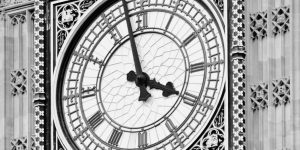
What Happened On May 31st?
On May 31, 1859, the Great Clock of the Palace of Westminster, famously known as Big Ben, began its role in keeping time. This day was not just the start of a clock; it began a culmination of years of innovation and engineering brilliance in Great Britain.
Crafting The Clock
The story of Big Ben began in 1834 when a devastating fire destroyed much of the Palace of Westminster. In response, Charles Barry was appointed to design the new Houses of Parliament, envisioning a grand clock tower as a focal point.
However, it was Sir Edmund Beckett Denison, a lawyer with a keen interest in horology, brought the clock to life. Denison collaborated with clockmaker Edward John Dent, and together they created one of the most precise and large mechanical clocks of their time.
The First Tick
On May 31, 1859, final adjustments were being made to the clock’s mechanisms. The Great Bell, later known as Big Ben, had already been installed in the tower. At precisely 11:00 AM, the clock began to tick, its hands moving across the massive 23-foot diameter dials.
Ingenious Clockwork
Big Ben’s accuracy owes much to its innovative double three-legged gravity escapement, designed by Denison. This mechanism ensures that external factors such as wind do not affect the pendulum’s motion, maintaining precise timekeeping.

The pendulum, which is 13 feet long and weighs 660 pounds, has a stack of old pennies placed on top. Each penny added or removed alters the clock’s speed by 0.4 seconds per day, a simple yet ingenious method of fine-tuning.
Big Ben’s Unique Chime
The clock mechanism was a marvel, but the Great Bell, known as Big Ben, is what mesmerized people. Cast at the Whitechapel Bell Foundry, the original bell cracked during testing. A second bell, weighing over 13 tons, was cast and installed, but it too developed a crack shortly after installation.
Ingeniously, rather than recasting it, the bell was rotated and struck with a lighter hammer, allowing it to ring with its now-famous tone. The bell’s deep, resonant chimes have since become an intrinsic part of London’s soundscape.
Big Ben In Wartime
A lesser-known fact about Big Ben is that the clock was resilient during World War II. Despite the blitz, the clock continued to function accurately, becoming a symbol of British endurance. This period solidified Big Ben’s status as more than just a clock; it was a beacon of hope and continuity in a time of turmoil.
The Clock Keepers?
The clock’s precision relies heavily on the dedication of its keepers. These skilled individuals wind the clock three times a week, a process that takes about an hour and involves using a giant crank. This human element ensures that Big Ben continues to keep time with remarkable accuracy.
A Cultural Icon
Over the years, Big Ben has become iconic, appearing in countless films, television shows, and literary works. It has also been the backdrop for historical events and public celebrations.
For instance, on New Year’s Eve, the chimes of Big Ben mark the stroke of midnight, a moment broadcasted and celebrated across the United Kingdom. Interestingly, the clock’s dials are made of opal glass, allowing them to be illuminated from within, ensuring visibility in all weather conditions, an essential feature in London’s often foggy climate.

Big Ben’s Bells
Did you know that Big Ben was not the first large bell cast for the clock tower?The original bell, cast in 1856, weighed 16 tons and was transported through the streets of London on a carriage drawn by 16 white horses. Unfortunately, this bell cracked irreparably during testing. The second bell, cast in 1858, also cracked but was ingeniously repaired to produce the iconic sound we recognize today.
A Timeless Symbol
Beyond its technical achievements, Big Ben has served as a symbol of continuity and resilience. During its history, it has stood tall for the rise and fall of empires and the advent of modern technology. Despite the passage of time, it remains a steadfast guardian of time in an ever-changing world.
On that momentous day in 1859, as the Great Clock of Westminster began to keep time, it not only marked the hours but also the beginning of an era of precision engineering and cultural. Big Ben continues to stand as a timeless emblem of Britain’s rich heritage.

